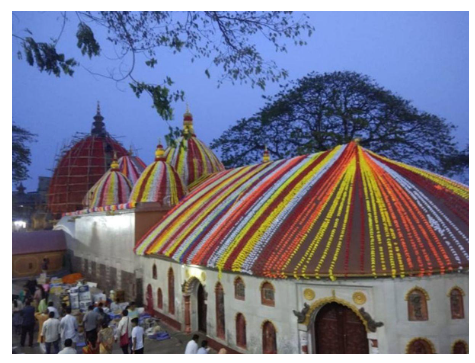Monday, 12th February 2024
Daily News Paper Snippets - 12th February 2024

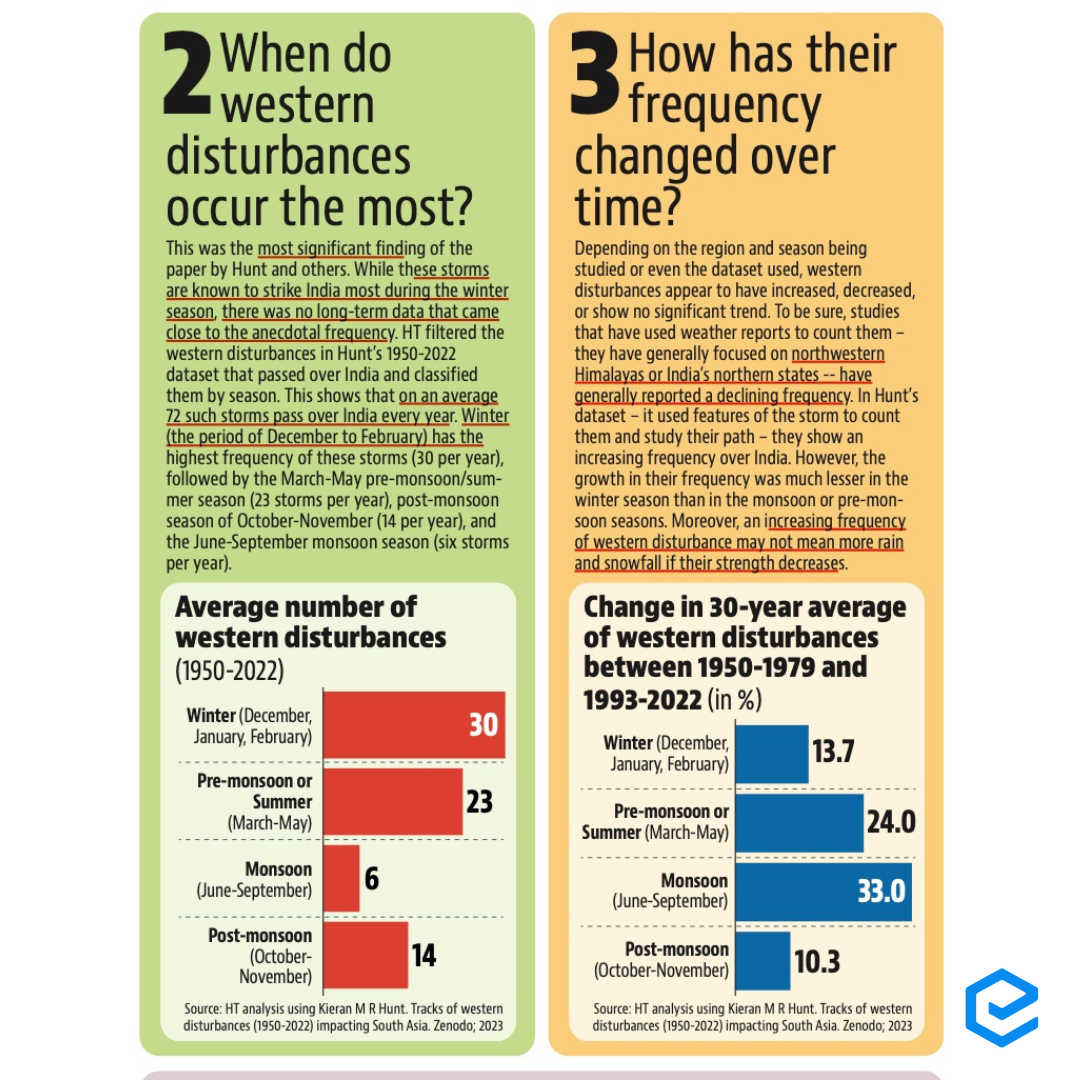
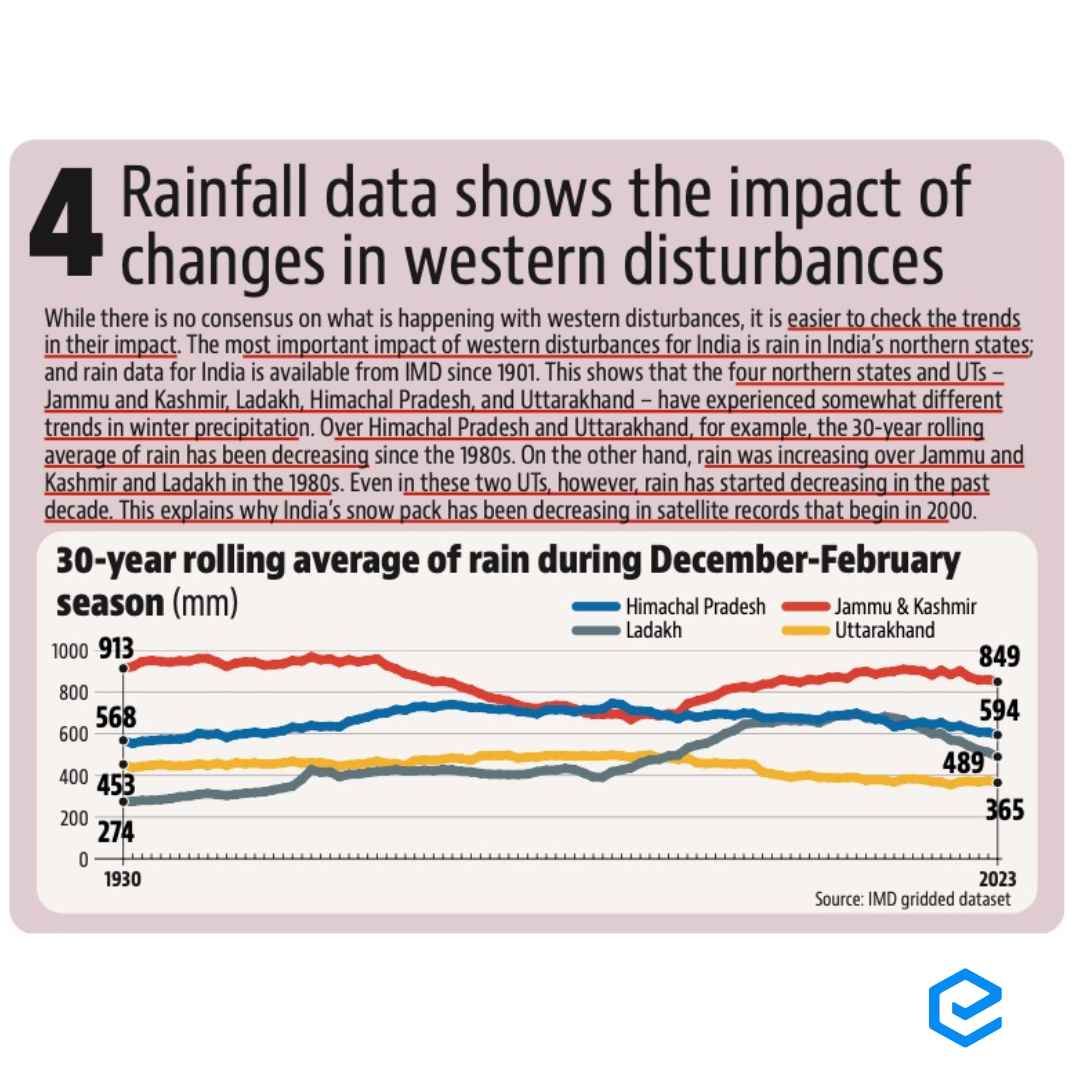
Ladakh’s Statehood Demand
In News: Lately, Ladakh, a Union Territory, experienced a shutdown as the local community pressed for statehood and sought constitutional safeguards under the Sixth Schedule.
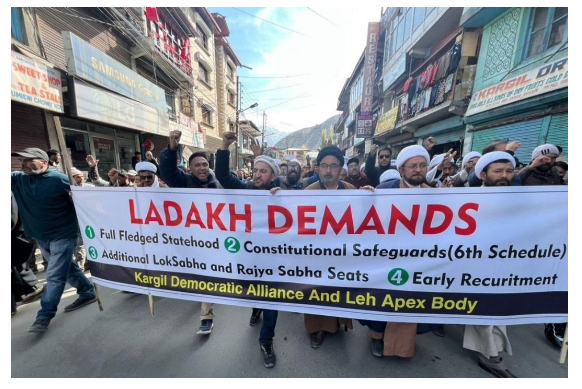
Primary Demands of Ladakh
- Statehood for Ladakh
- Advocating the elevation of Ladakh from its current Union Territory status to a full-fledged state for increased political autonomy and decision-making powers.
- Safeguards under the 6th Schedule
- Calling for Constitutional provisions under the 6th Schedule to protect the cultural, linguistic, and land rights of the indigenous population.
- Reservation of Jobs
- Urging reservations in employment opportunities for Ladakh's youth to ensure equitable access to economic resources and opportunities.
- Creation of Separate Parliamentary Constituencies
- Proposing the establishment of distinct Parliamentary constituencies for Leh and Kargil to reflect the unique demographic and geographical characteristics of each region.
Imperatives Behind Ladakh's UT Status
- Cultural and Demographic Differences
- Highlighting the cultural and demographic disparities between Ladakh's Buddhist majority and the Muslim-majority population of the erstwhile state of Jammu and Kashmir.
- Security Considerations
- Emphasizing the strategic importance of Ladakh's borders with Pakistan and China, leading to its designation as a Union Territory for more streamlined administration in security matters.
- Developmental Perspective
- Discussing the Indian government's likely motivation to address long-standing grievances, improve administrative efficiency, and expedite development in Ladakh.
Constitutional Provisions for Formation of States
- Article 3 Authority
- Explaining Article 3 of the Indian Constitution, granting Parliament the authority for actions related to the formation, alteration, or dissolution of states.
- Conditions under Article 3
- Detailing the conditions under which Parliament can exercise its authority, including the prior recommendation of the President and consultation with the concerned state legislature.
- Additional Consideration
- Noting that Parliament is not obligated to adhere to the views of the state legislature, and it has the discretion to accept or reject them.
The Sixth Schedule
- Overview
- Providing information about the Sixth Schedule and its special provisions for the administration of tribal areas in the northeastern states of Assam, Meghalaya, Tripura, and Mizoram.
- Objectives
- Outlining the objectives of the Sixth Schedule, which include safeguarding tribal land and resources, preventing their transfer to non-tribal entities, and protecting tribal communities from exploitation.
- Autonomous Districts and Regions
- Describing the establishment of Autonomous Districts and Regions within the tribal areas, with the Governor having the authority to organize, reorganize, and alter boundaries or names.
- District and Regional Council
- Explaining the constitution of District and Regional Councils, their membership composition, and the powers vested in the Governor for nominations and electoral processes.
|
UPSC Previous Year Questions Prelims (2012) Q. Which of the following provisions of the Constitution of India have a bearing on Education?
Select the correct answer using the codes given below: (a) 1 and 2 only Ans: (d) Prelims (2019) Q2. Under which Schedule of the Constitution of India can the transfer of tribal land to private parties for mining be declared null and void? (a) Third Schedule Ans: (b) |
Source: IE
Safety for children online
In News: In the initial days of February, Mark Zuckerberg, the CEO of Meta, publicly issued an apology to parents whose children fell prey to online predators during a Congressional hearing.
Challenges in Children's Online Safety
- Exposure to Inappropriate Content
- Children face the risk of encountering inappropriate content like violence, pornography, and hate speech during their internet activities.
- Online Predators and Grooming
- The potential threat of online predators using social media and gaming platforms to establish relationships with children, leading to potential exploitation or abuse.
- Cyberbullying
- Children can become victims of cyberbullying, utilizing digital technology to harass and humiliate others, resulting in severe psychological and emotional consequences.
- Privacy Concerns
- Children may unknowingly share personal information online due to a lack of understanding of the importance of privacy settings.
- Addictive Behavior
- Excessive screen time and digital device usage can lead to addictive behavior, negatively impacting mental and physical health, academic performance, and social interactions.
- Responsibility of Tech Companies
- Tech companies are accumulating vast amounts of data, impacting children's privacy, security, and freedom, prompting the need for responsible practices and safe-by-design platforms.
- Reach of Generative AI
- Generative AI brings potential opportunities but also risks, such as the potential for misinformation, harm, or disruptions that affect children's prospects and well-being.
Keeping Children Safe Online
- Increased Responsibility of Tech Companies
- Tech companies must incorporate safety by design, recognizing the impact of their apps and systems on children's well-being.
- UNICEF's Guidance for Child-Friendly AI
- UNICEF recommends that AI should support children's growth and happiness, protect their data and privacy, and adhere to the highest data protection standards.
- Government Responsibilities for Children's Online Safety
- Governments should establish regulatory frameworks, providing oversight to regularly update rules, address harmful content, and protect children's rights online.
- Responsibilities of Parents
- Use an internet security suite.
- Implement parental controls.
- Educate kids about privacy.
- Monitor online posts.
- Establish rules on website visits and online time.
- Report online abuse.
Source: TH
ASI Results for 2020-21 and 2021-22
In News: The Ministry of Statistics and Programme Implementation (MoSPI) recently unveiled the findings of the Annual Survey of Industries (ASI) for the reference periods of 2020-21 and 2021-22, identified as ASI 2020-21 and ASI 2021-22.
Key Highlights from ASI 2020-21 and ASI 2021-22 Results
- Growth in Gross Value Added (GVA)
- GVA grew by 8.8% in 2020-21, primarily due to a sharp fall in input offsetting an output contraction during the pandemic.
- In 2021-22, GVA surged by 26.6% over the previous year, driven by significant growth in industrial output.
- Key Industry Drivers
- Industries like Manufacture of Basic Metal, Pharmaceutical Products, Motor vehicles, and Chemical products played a major role in driving growth.
- These industries contributed about 56% of the total GVA, with substantial growth in both GVA and output.
- Regional Performance
- Gujarat led in GVA in 2020-21 and ranked second in 2021-22, while Maharashtra secured the top position in 2021-22.
- Tamil Nadu, Karnataka, and Uttar Pradesh consistently maintained top positions in contributing to manufacturing GVA.
- Employment Trends
- Despite a marginal fall in employment in 2020-21, 2021-22 saw robust growth of 7.0% in total estimated employment in the sector.
- Top five states employing the highest number of persons included Tamil Nadu, Gujarat, Maharashtra, Uttar Pradesh, and Haryana.
Annual Survey of Industries (ASI)
- About
- The ASI, initiated in 1960, serves as India's principal source of industrial statistics, conducted annually by the National Statistical Office (NSO).
- Scope and Coverage
- ASI covers registered factories, bidi and cigar manufacturing establishments, and non-CEA registered electricity undertakings.
- Units with 100 or more employees are included based on the Business Register of Establishments maintained by State Governments.
- Data Collection Mechanism
- Data for ASI are collected from selected factories under the Collection of Statistics Act, 2008, amended in 2017, ensuring coverage and quality of released statistics.
|
UPSC Previous Year Questions Prelims (2015) Q. In the ‘Index of Eight Core Industries’, which one of the following is given the highest weight? (a) Coal production Ans: (b) Prelims (2015) Q2. With reference to Indian economy, consider the following statements:
Which of the statements given above is/are correct? (a) 1 only Ans: (b) Mains (2017) Q.1 “Industrial growth rate has lagged behind in the overall growth of Gross-Domestic-Product (GDP) in the post-reform period” Give reasons. How far are the recent changes in Industrial Policy capable of increasing the industrial growth rate? Mains (2014) Q.2 Normally countries shift from agriculture to industry and then later to services, but India shifted directly from agriculture to services. What are the reasons for the huge growth of services vis-a-vis the industry in the country? Can India become a developed country without a strong industrial base? |
Source: PIB
High Altitude Pseudo Satellite (HAPS)
In News: Earlier this month, the CSIR-National Aerospace Laboratories (NAL) conducted a successful test of an unmanned aerial vehicle named High Altitude Pseudo Satellite (HAPS) at Challakere, Karnataka.

High Altitude Pseudo Satellite (HAPS) Overview
- Introduction
- Since the 1990s, global initiatives have explored the applications of High Altitude Pseudo Satellites, also known as High Altitude Platform Stations (HAPS).
- Positioned above 20 km in the stratosphere, these solar-powered aircraft offer very-long-duration flights counted in months or even years.
- Types of HAPS
- HAPS can be unmanned aircraft, including airplanes, airships, or balloons.
Benefits and Advantages of HAPS
- Bridging the Gap
- Designed to fill the gap between lower-altitude unmanned aerial vehicles (UAVs) and conventional satellites in space.
- Applications
- Considered for various applications such as telecommunications, emergency/public safety communications, intelligent transportation systems, maritime surveillance, environmental monitoring, and land border control.
- Coverage and Cost-Efficiency
- HAPS can cover larger areas with less interference compared to ground-based communication networks.
- Cost far less and are easier to launch compared to traditional satellites.
Significance for India
- Border Safeguarding
- HAL in collaboration with a start-up is developing a high altitude pseudo satellite for efficient border patrolling and tracking movements along India's vast land and sea borders.
- Features and Capabilities
- Equipped with high-definition optical and infra-red cameras, advanced sensors, suitable for round-the-clock missions, border patrolling, target tracking, maritime surveillance, navigation, and missile detection.
- International Developments
- China's Aviation Industry Corporation has been working on HAPS platforms for surveillance purposes, successfully testing solar-powered drones for prolonged airborne missions.
National Aerospace Laboratories (NAL) Test
- Successful Test
- NAL conducted a successful test of an unmanned aerial vehicle, HAPS, at Challakere, Karnataka.
- The 5-meter-long system, weighing 23 kg, rose to about 3 km and stayed airborne for approximately eight hours.
- Future Plans
- Planned series of tests expected to culminate in a full-bodied craft with a wingspan of 30m by 2027.
- Aiming for an altitude of 23 km and at least 90 days of airborne capability.
- NAL's Development Focus
- NAL aims to design and build various components, including propellers, battery management systems, carbon-composite airframes, flight-control systems, and high-powered electric motors capable of withstanding extreme temperature ranges.
- Industry Milestone
- This achievement follows a Bengaluru-based private company's recent test-flight of a solar-powered, long-endurance drone, flying for 21 hours in an unrelated project.
Source: TH
Dhokra Shilpkala
In News: Ocher Studio in Chhattisgarh contributes to the preservation of India's 4,000-year-old craft, Dhokra Shilpkala.
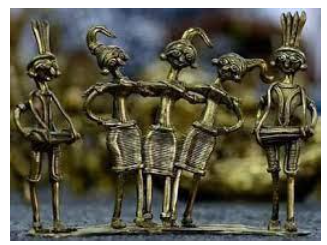
Dhokra Shilpkala: Unveiling a Traditional Craft
- Etymology and Tribal Roots
- The term "Dhokra" finds its origin in the Dhokra Damar tribes, renowned metal smiths in Central India.
- Cultural Genesis
- Originating in regions like Chhattisgarh, Jharkhand, West Bengal, and Odisha, Dhokra Shilpkala has deep roots in the cultural and religious practices of tribal communities.
- Distinctive Casting Technique
- Dhokra Shilpkala stands out due to its unique metal casting method, employing the lost wax casting technique, known as cire perdue.
- Artistic Flair and Designs
- Exhibiting a rustic charm, the artistry in Dhokra Shilpkala draws inspiration from nature, mythology, and daily life.
- Motifs include animals, birds, deities, and tribal symbols, portraying an organic and captivating design.
- Diverse Artistic Expressions
- Ranging from miniature figurines and jewelry to larger sculptures and functional items, Dhokra Shilpkala encompasses a broad spectrum of artistic creations=
- Challenges Faced
- The livelihoods of traditional artisans are under threat due to rapid urbanization and the adoption of mechanized production methods, endangering the continuity of this ancient craft.
Source: ET
Fund of Funds
In News: As per Crisil's evaluation named Prabhaav, the Fund of Funds for Startups (FFS) scheme has facilitated investments approximately four times the drawn amount, with a total of Rs 17,534 crore being invested in 938 startups.
Fund of Funds Scheme: Nurturing Startup Ecosystem
- Inception and Corpus
- Established in 2016, the Fund of Funds for Startups (FFS) Scheme began with a corpus of Rs 10,000 crore.
- Investment Mechanism
- FFS does not directly invest in startups; instead, it allocates capital to SEBI-registered Alternative Investment Funds (AIFs), termed daughter funds.
- Daughter funds, in turn, invest in Indian startups using equity and equity-linked instruments.
- Operational Oversight
- The Small Industries Development Bank of India (SIDBI) manages the Fund, selecting suitable daughter funds and overseeing the disbursement of committed capital.
- Investment Commitment
- AIFs supported by FFS are mandated to invest a minimum of 2 times the amount committed under FFS in startup ventures.
Insights into Small Industries Development Bank of India (SIDBI)
- Establishment and Mandate
- Founded under a Parliament Act in 1990, SIDBI serves as the principal financial institution for promoting, financing, and developing the Micro, Small, and Medium Enterprises (MSMEs) sector.
- Key Objective
- SIDBI's primary goal is to provide loans, both direct and indirect, to MSMEs, bridging development and financial gaps within the MSME ecosystem.
- Facilitating Growth
- SIDBI plays a crucial role in assisting MSMEs by securing funds for market expansion, technology development, and the commercialization of innovative products.
- Administrative Responsibilities
- Entrusted with the administration of the Small Industries Development Fund and National Equity Fund, SIDBI ensures effective financial support for MSMEs.
Source: FE
Aral Sea
In News: NASA's Earth Observatory recently published an in-depth analysis exploring the causes behind the disappearance of the Aral Sea.
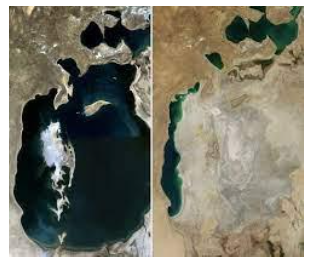
Aral Sea: A Vanishing Water Body
- Geographical Location
- Positioned at the border of Kazakhstan to the north and Uzbekistan to the south, the Aral Sea was once the world's fourth-largest saltwater lake in Central Asia.
- Historical Significance
- It held the status of a substantial inland water body and played a significant role in the region's ecology.
- Current Status
- The remnants of the Aral Sea now exist in the climatically harsh heart of Central Asia, to the east of the Caspian Sea.
- Formation History
- The Aral Sea depression took shape in the Neogene Period's final stages (approximately 23 to 2.6 million years ago) through waters from the Syr Darya and the Amu Darya rivers, relying on glacial melt.
- Drainage Influence
- The Aral Sea drainage encompasses regions in Uzbekistan and parts of Kazakhstan, Tajikistan, Afghanistan, Turkmenistan, Iran, and Kyrgyzstan.
- Climate Characteristics
- Positioned within Central Asia's harsh climate region, the Aral Sea area encounters a desert-continental climate marked by extreme temperatures, including hot summers and cold winters.
Causes Behind its Decline
- Soviet Water Diversion Project (1960)
- In 1960, the Soviet Union initiated a significant water diversion project, redirecting the Syr Darya and the Amu Darya rivers for irrigation initiatives.
- Environmental Impact
- While the project led to agricultural development in the surrounding desert, it had severe consequences for the Aral Sea.
- Gradual Desiccation
- The diverted waters resulted in a gradual drying up of the Aral Sea, pushing it to the brink of complete disappearance.
- Ecosystem Devastation
- The altered water flow disrupted the ecological balance, causing irreversible damage to the sea's biodiversity and overall ecosystem.
Source: HT
Frozen Smoke
In News: Scientists have created a sensor using "frozen smoke," incorporating artificial intelligence methods to detect real-time concentrations of formaldehyde, reaching levels as low as eight parts per billion.
Frozen Smoke: Unveiling the Wonders of Aerogel
- Historical Origins
- Developed in the 1930s, aerogel, colloquially known as frozen smoke, stands out as an extraordinary material.
- Etymology
- The term "aerogel" is a fusion of the Greek words "aero" (meaning air) and "gel," reflecting its origin from gels.
- Miracle Material Recognition
- Acknowledged as a miracle material, aerogel boasts remarkable properties that make it unique in various applications.
Properties of Aerogel
- Low Density
- Aerogel exhibits an exceptionally low density, contributing to its lightweight nature.
- High Thermal Resistivity
- Known for high thermal resistivity, aerogel effectively insulates against heat transfer.
- Highly Porous Structure
- Characterized by a highly porous structure, aerogel resembles a fine, dry sponge in texture.
- Lightest Solid Material
- Holding the distinction of being the lightest solid in the world, aerogel showcases its extraordinary lightweight composition.
- Resilient Texture
- When lightly pressed, aerogel effortlessly returns to its original form, akin to a dry sponge. However, increased pressure may result in the formation of a dimple, and excessive force can cause it to shatter like glass into tiny pieces.
- Air Composition
- Composed predominantly of air, aerogels leverage their porous structure for various applications, including the removal of contaminants.
Versatile Applications
- Contaminant Removal
- Due to its unique structure, aerogel proves effective in the removal of contaminants, showcasing its versatility in different industrial and scientific applications.
Source: PO
Thames River
In News: UK authorities stated that the individual sought in connection with the recent chemical attack is believed to have jumped into the Thames River and perished.
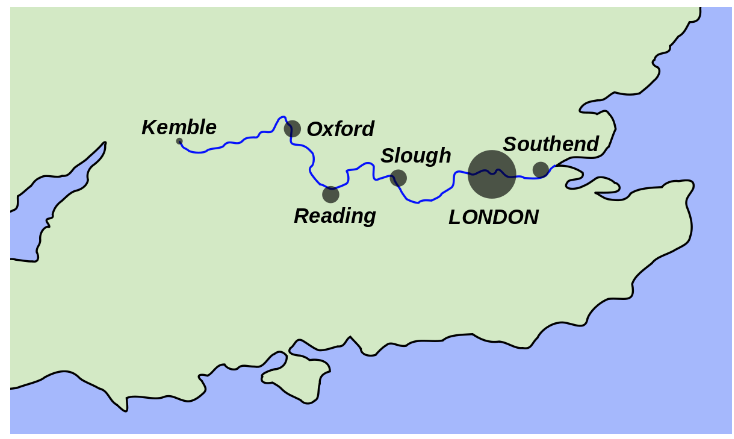
About Thames River
- The Thames River is a 346-km river flowing through southern England.
- It holds the title of the longest river in England and the second longest in the United Kingdom after the River Severn.
- The Thames' basin covers approximately 16,130 sq.km, with its source at Thames Head near Kemble in the Cotswold Hills, Gloucestershire County.
- Flowing into the North Sea via the Thames Estuary, the Nore marks the sandbank at the estuary's mouth.
- The river passes through cities such as London, Reading, Hendley-on-Thomas, Windsor, and Oxford (known as the Isis River).
- Thames contributes two-thirds of London's drinking water.
- Historically, it has served as a crucial transportation route, facilitating trade and commerce between London and other regions.
- Main tributaries include Lea, Leach, Churn, Coln, Windrush, Kennet, Evenlode, Ock, and Loddon.
Source: WION
Kalasa-Banduri Project
In News: The National Board for Wildlife (NBWL) has postponed the verdict on the allocation of forest land from the Kali and Sahyadri tiger reserves for the development of a segment of the Kalasa-Banduri Project proposed by the Karnataka government.
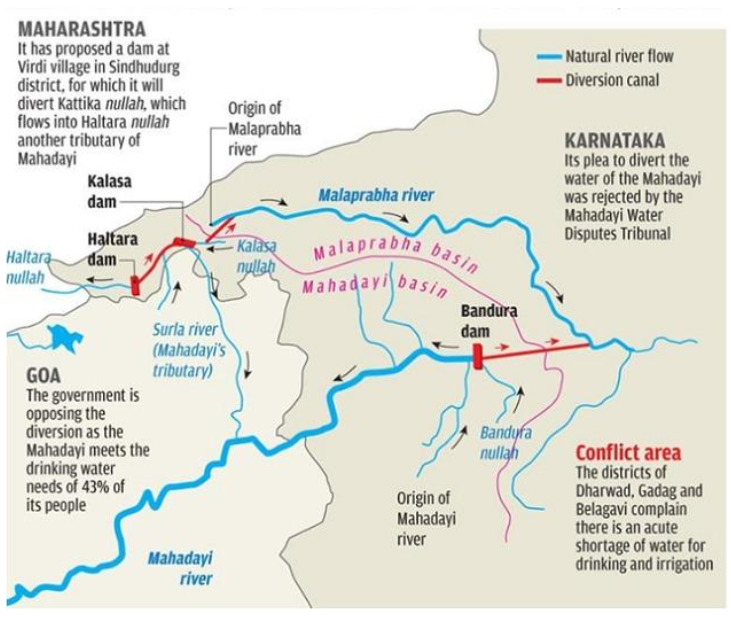
Kalasa-Banduri Project Overview
- Project Description
- The Kalasa-Banduri Project entails the development of dams and a canal system to redirect water from the Mahadayi River, situated in Goa, to the Malaprabha River basin in Karnataka.
- Objective
- The primary objective of the project is to address the drinking water requirements of Karnataka's Belagavi, Dharwad, Bagalkot, and Gadag districts.
- Historical Background
- Proposed in the early 1980s, the project has faced obstacles, remaining unrealized due to disputes involving Karnataka, Goa, and Maharashtra.
- Implementation Plan
- The project involves constructing barrages along the Kalasa and Banduri streams, both tributaries of the Mahadayi River. These barrages aim to divert water to alleviate the water scarcity in Karnataka's designated districts.
Mahadayi River Key Facts
- Origin
- The Mahadayi River originates in the Western Ghats, flowing from the Bhimgad Wildlife Sanctuary in Karnataka's Belagavi district.
- Course
- Traversing 35 km in Karnataka and 82 km in Goa, the river eventually meets the Arabian Sea at Panji in North-Goa. Known as Mandovi in Goa, it serves as a rain-fed river shared by Karnataka and Goa for their water needs.
- Significant Location
- The Salim Ali Bird Sanctuary is situated on the Chorao Island within the Mandovi River.
- Major Tributaries
- Key tributaries of the Mahadayi River include Kalasa Nala, Banduri Nala, Surla Nala, Haltar Nala, Poti Nala, Mahadayi Nala, Pansheer Nala, Bail Nala, and Andher Nala.
Source: HT
A Comprehensive Strategy for Population Control
In News: The Interim Budget 2024-25's introduction of a "high-powered committee" or "Population Committee" to address challenges from rapid population growth and demographic changes is groundbreaking and requires an interdisciplinary approach.
Present Population Growth Trends in India
- Decline in Population Growth
- Decadal growth rates have been consistently decreasing since 1971-81.
- EAG States witnessed a significant fall during the 2011 census.
- Decline in India’s TFR
- Total Fertility Rate (TFR) dropped from 2.2 to 2.0 between NFHS-4 and NFHS-5.
- Only five states are above the replacement level of fertility.
- Improvement in Mortality Indicators
- Life expectancy at birth increased from 32 years in 1947 to 70 years in 2019.
- NFHS-5 reports an Infant Mortality Rate (IMR) of 32 per 1,000 live births.
- Increase in Family Planning
- Contraceptive Prevalence Rate (CPR) rose from 54% to 67% at the all-India level.
- Improvement in Life Expectancy
- UNFPA projects an average life expectancy of 71 for Indian males and 74 for females.
- Robust Demographic Dividend
- India's 68% population falls in the 15 to 64 years age group, contributing significantly to the working-age population.
Need for the Formation of the Population Committee in India
- Large Projected Population
- UN estimates predict India's population exceeding 1.5 billion by the end of this decade.
- Harnessing Demographic Dividend
- Demographic dividend offers economic growth potential requiring investments in health, education, and skill development.
- Addressing Health, Education, and Employment Challenges
- Public spending on health needs improvement.
- Nearly 47% of Indian youth may lack necessary education and skills by 2030.
- Importance of Evidence-Based Decision Making
- Accurate and timely data essential for evidence-based policymaking.
- High-powered committee can provide an alternative to lagging data.
- Need for Modernizing Data Infrastructure
- Modernizing data infrastructure crucial for accurate demographic data collection.
- Investments in data collection methods and data security imperative.
- Realizing Inclusive and Sustainable Development
- Holistic approach needed, prioritizing investments in health, education, and employment.
- Strategic planning, effective implementation, and international collaboration key to success.
Formation of the Population Committee
- Adopting a Multi-Sectoral Strategy
- Committee should align with 'Viksit Bharat.'
- Adopt a multi-sectoral strategy encompassing family planning, health, education, and socio-economic development.
- Interdisciplinary Approach to Population Management
- Success depends on interdisciplinary approach.
- Leverage diverse perspectives to identify emerging issues and assess existing interventions.
- Synergistic Efforts for Effective Implementation
- Collaboration with diverse stakeholders essential for policy implementation.
- Foster collective action for the success of population-related programs.
- Emphasis on Public Awareness and Education
- Committee must prioritize public awareness and education campaigns.
- Empower individuals and communities with accurate information for responsible family planning.
- International Collaboration in Population Management
- Facilitate international collaboration and exchange of best practices.
- Learn from global experiences to enrich India's strategies in addressing demographic challenges.
- Integrating India's Evolving Demographic Landscape
- Understand and address shifts in India's demographic landscape.
- Critical for shaping future economic and demographic trajectories.
- Adopting Quality Assurance Mechanisms for Data Reliability
- Implement rigorous validation and quality assurance mechanisms.
- Independent audits and data validation exercises crucial for data accuracy.
- Facilitating Data Accessibility to Researchers
- Promote open data initiatives and transparency in data sharing.
- Standardized formats and data sharing protocols enhance data accessibility.
Conclusion
- Establishment of a high-powered committee is a significant step towards formulating effective population policies.
- The committee should adopt an interdisciplinary approach, collaborate with stakeholders, and focus on public awareness to manage population growth effectively.
- India's demographic landscape offers opportunities for economic growth, requiring investments in health, education, and employment.
- Strategic planning, effective implementation, and international collaboration are crucial for navigating India's demographic transition successfully.
|
UPSC Previous Year Questions Prelims (2019) Q. In the context of any country, which one of the following would be considered as part of its social capital? (a) The proportion of literates in the population (b) The stock of its buildings, other infrastructure and machines (c) The size of population in the working age group (d) The level of mutual trust and harmony in the society Ans: (d) Prelims (2011) Q. India is regarded as a country with “Demographic Dividend”. This is due to (a) Its high population in the age group below 15 years (b) Its high population in the age group of 15-64 year (c) Its high population in the age group above 65 years (d) Its high total population Ans: (b) Mains (2021) Q. Discuss the main objectives of Population Education and point out the measures to achieve them in India in detail. Mains (2019) Q. “Empowering women is the key to control the population growth.’’ Discuss. Mains (2015) Q. Critically examine whether growing population is the cause of poverty or poverty is the main cause of population increase in India. |
Source: TH
"Enhancing Institutional Deliveries: Bike, Auto, and Van Engagement" - Case Study of the Day
To enhance institutional deliveries and prevent complications during transportation, Kandhamal introduced Delivery Vans, a pioneering initiative in the state.
- Overcoming tribal norms favoring traditional practices, the district employed Bike Ambulances and Janani Auto vehicles, achieving a 97% institutional delivery rate and a 65% reduction in maternal deaths.
- Awareness campaigns and functional delivery points further strengthened the community's involvement, making Kandhamal a success story in maternal healthcare.
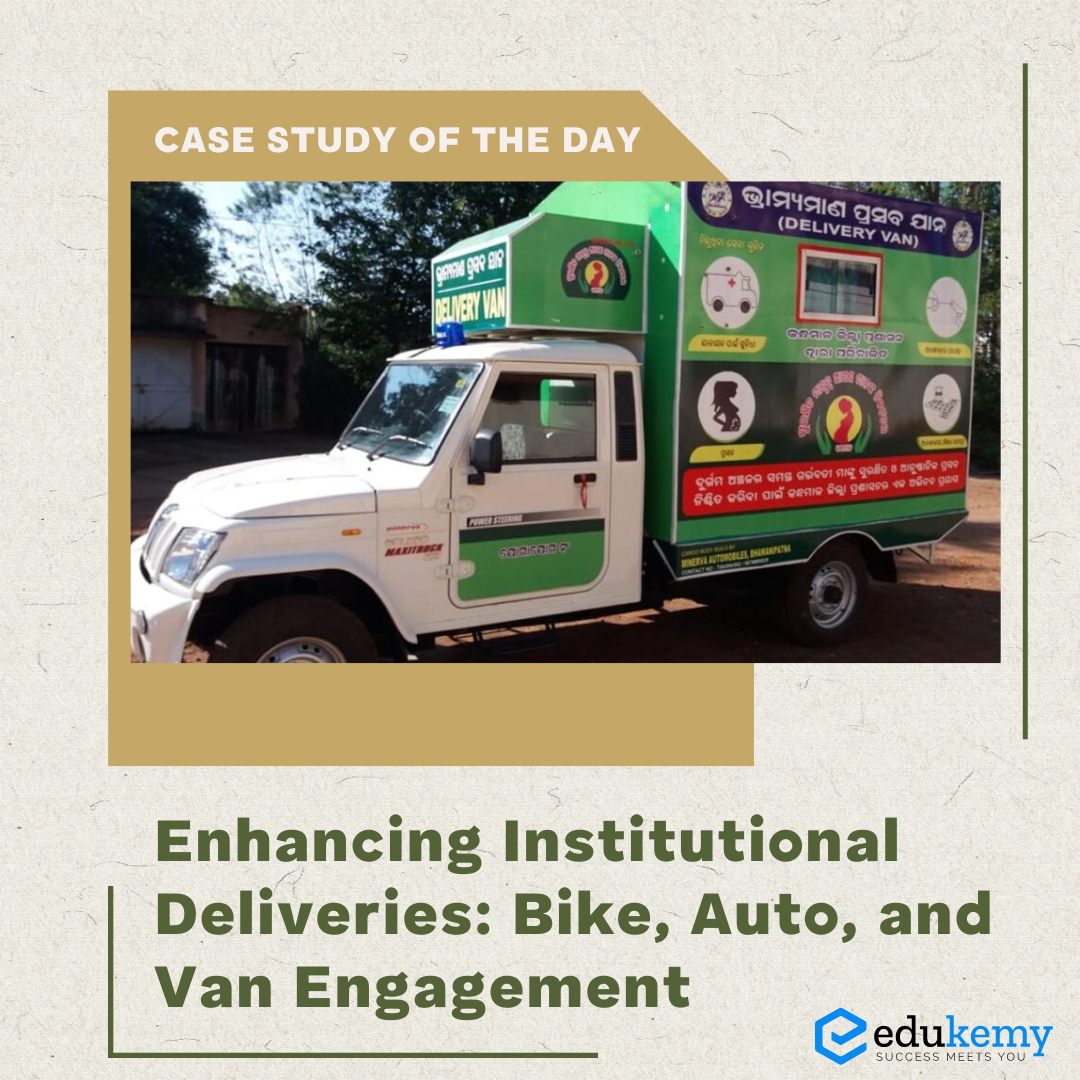
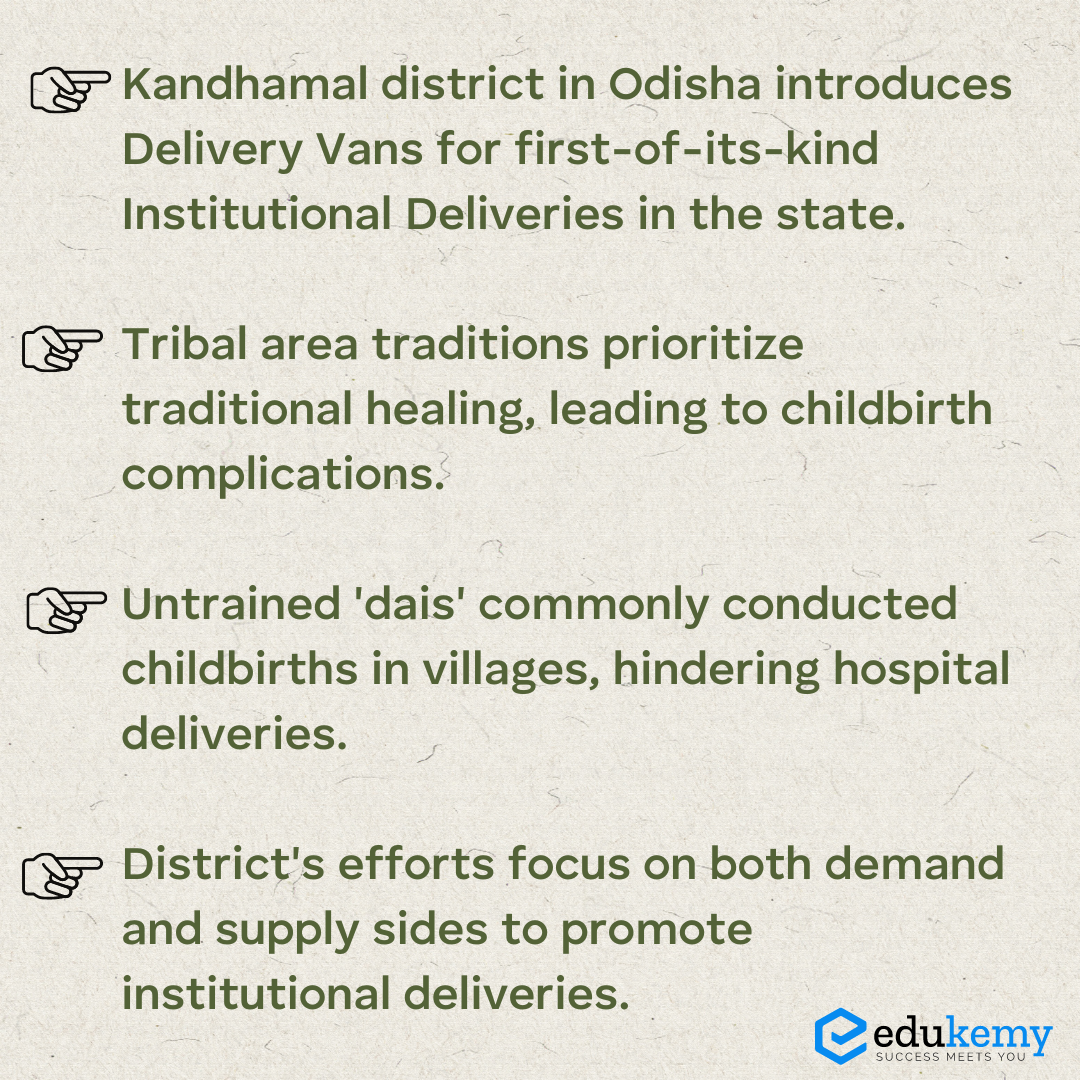

Share the article
Edukemy’s Current Affairs Quiz is published with multiple choice questions for UPSC exams
MCQ
Get Latest Updates on Offers, Event dates, and free Mentorship sessions.

Get in touch with our Expert Academic Counsellors 👋
FAQs
UPSC Daily Current Affairs focuses on learning current events on a daily basis. An aspirant needs to study regular and updated information about current events, news, and relevant topics that are important for UPSC aspirants. It covers national and international affairs, government policies, socio-economic issues, science and technology advancements, and more.
UPSC Daily Current Affairs provides aspirants with a concise and comprehensive overview of the latest happenings and developments across various fields. It helps aspirants stay updated with current affairs and provides them with valuable insights and analysis, which are essential for answering questions in the UPSC examinations. It enhances their knowledge, analytical skills, and ability to connect current affairs with the UPSC syllabus.
UPSC Daily Current Affairs covers a wide range of topics, including politics, economics, science and technology, environment, social issues, governance, international relations, and more. It offers news summaries, in-depth analyses, editorials, opinion pieces, and relevant study materials. It also provides practice questions and quizzes to help aspirants test their understanding of current affairs.
Edukemy's UPSC Daily Current Affairs can be accessed through:
- UPSC Daily Current Affairs can be accessed through Current Affairs tab at the top of the Main Page of Edukemy.
- Edukemy Mobile app: The Daily Current Affairs can also be access through Edukemy Mobile App.
- Social media: Follow Edukemy’s official social media accounts or pages that provide UPSC Daily Current Affairs updates, including Facebook, Twitter, or Telegram channels.


